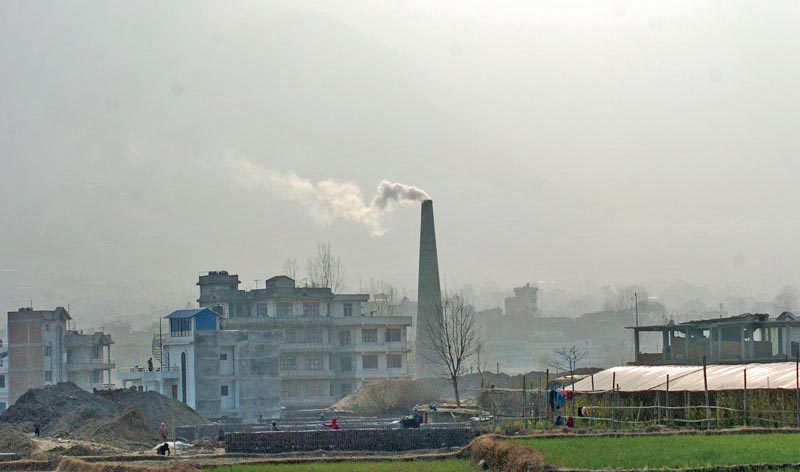Use of excessive coal in brick kilns adding to pollution
Kathmandu, January 7
The use of large quantities of coal in brick kilns contributes significantly to emissions of carbon dioxide, particulate matter, including black carbon, sulphur dioxide, oxides of nitrogen and carbon monoxide, says a report recently published by the Department of Environment.
The pollutants not only have an adverse effect on the health of workers, local population, and vegetation, but also contribute to global warming. “Coal is a combination of different chemical components, which produce heat in exothermic reaction. Some components of the coal such as ash do not produce any heat, but after combustion it remains in the kiln. Ash can be divided into two types namely fly ash and bottom ash. Fly ash is the one of the pollutants which is emitted as Suspended Particulate Matter through flue gas,” it reads.
Along with fly ash unburnt carbon is also emitted through flue gas. Due to unburnt carbon, flue gas can be seen as black in colour. Energy efficient kiln can achieve 100 per cent elimination of unburnt carbon and can also reduce the fly ash percentage. New technologies such as the Vertical Shaft Brick Kiln, Tunnel Kilns and Hybrid Hoffmann Kiln are substantially cleaner than the currently used Fixed Bull Trench Kilns. These improved technologies consume less energy and emit lower levels of pollutants and greenhouse gases.
During the study, 30 brick kilns were visited in Kathmandu, Lalitpur and Bhaktapur districts. About 110 brick kilns (Kathmandu 15, Lalitpur 32 and Bhaktapur 63) are in operation in Kathmandu Valley.
“Pollution control devices have not been installed by any brick kilns, but some simple steps have been taken into considered during kiln construction and operation by some,” it says.
Total 9,334 workers are working in the industry of which 2,772 are female. These industries are using coal as the main fuel, consuming 12,409 tonnes of coal and 1,881 tonnes of other local fuels. Dust generated and blown due to air movement was also seen as a major issue among employees and neighbouring locals. Although most kilns meet the national standards, black smoke is still seen in some chimneys during firing. Average SPM concentration of BTK was 326 mg/Nm3; VSBK was 144 mg/Nm3 and Hoffmann was 374 mg/Nm3. These values are within the current standards. However, they are not within proposed standards (the standard currently under process for enforcement) and also not in level of the existing brick kiln technology that have emerged in the world, according to the report.
In addition to the Environment Protection Act and Environment Protection Rules, the constitution has also emphasised on the right to clean environment. The Government of Nepal has promulgated the standards on Chimney Height and Emission for the Brick Kiln Industries. The Ministry of Population and Environment is working on new brick emission standards, it says.






